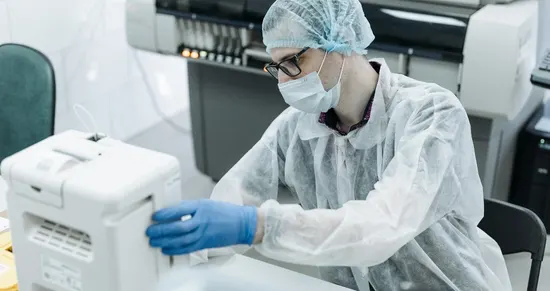What is Interoperability in Software as a Medical Device (SaMD)
Interoperability is the ability of two or more devices, including software, from the same manufacturer or from different manufacturers to:
- exchange information and use the information that has been exchanged for the correct execution of a specified function without changing the content of the data, and/or
- communicate with each other, and/or
- work together as intended.
Interoperability in Software as a Medical Device (SaMD) refers to the ability of different medical software systems to work together seamlessly, exchanging and utilizing data in a standardized and efficient manner. Achieving interoperability is crucial in the healthcare industry to enhance patient care, streamline processes, and facilitate the integration of various software applications.
Four Levels of Interoperability
Interoperability in Software as a Medical Device (SaMD) is essential for seamless data exchange and collaboration between healthcare systems. It can be categorized into four levels, each playing a vital role in ensuring efficient communication and integration.
1. Foundational Interoperability:
This is the most basic level, where different SaMD systems can exchange data but may not be able to interpret it. It ensures that information can be transmitted successfully from one system to another, even if further processing is required. For example, a patient’s test results can be sent from a diagnostic device to an electronic health record (EHR) system, but manual input may be needed for interpretation.
2. Structural Interoperability:
At this level, data is formatted in a standardized manner so that receiving systems can recognize and organize it properly. Standards like HL7, FHIR, and DICOM ensure structured communication, reducing errors and improving efficiency in medical data exchange.
3. Semantic Interoperability:
This level ensures that different systems not only exchange data but also interpret and use it meaningfully. Medical terminologies such as SNOMED CT and LOINC standardize healthcare data, enabling software applications to process and analyze information without manual intervention.
4. Organizational Interoperability:
The highest level focuses on aligning policies, workflows, and governance structures to support seamless interoperability across healthcare institutions. It ensures compliance with regulatory standards like FDA, MDR, and HIPAA while fostering collaboration among different stakeholders.
Achieving all four levels enhances patient care, streamlines operations, and strengthens the healthcare ecosystem.
What is Health Information Exchange and Data Sharing
Health Information Exchange (HIE) refers to the secure and efficient sharing of healthcare data across various systems, organizations, and providers. It enables seamless communication between hospitals, clinics, laboratories, and other healthcare entities, ensuring that critical patient information is accessible when and where it is needed. HIE plays a crucial role in improving patient care, reducing medical errors, and enhancing clinical decision-making.
Data sharing in healthcare involves the exchange of patient records, test results, prescriptions, and other essential medical data. This process ensures that healthcare providers have a complete and up-to-date view of a patient’s medical history, allowing for better treatment decisions and improved health outcomes. The use of standardized protocols like HL7, FHIR, and DICOM facilitates interoperability and ensures that different healthcare systems can communicate effectively.
HIE operates through three primary models:
1. Directed Exchange – Securely sending patient information between healthcare professionals.
2. Query-Based Exchange – Allowing authorized providers to search and retrieve patient records.
3. Consumer-Mediated Exchange – Enabling patients to access and control their health data.
Despite its benefits, challenges such as data security, privacy concerns, and system integration complexities remain. Compliance with regulations like HIPAA (USA) and GDPR (EU) is essential to maintain patient confidentiality.
With advancements in digital health, HIE continues to evolve, driving efficiency, reducing costs, and ensuring better healthcare delivery by enabling seamless and standardized data exchange across the medical ecosystem.
key aspects of interoperability in Software as a Medical Device
Data Standards in Software as a Medical Device (SaMD)
Standardized Formats: SaMD should use standardized data formats and communication protocols to ensure that information can be easily exchanged between different systems. Common standards in healthcare include HL7 (Health Level Seven) for data exchange and DICOM (Digital Imaging and Communications in Medicine) for medical imaging.
Health Information Exchange (HIE) in SaMD
Software as a Medical Device (SaMD) should support established communication protocols for health information exchange, such as FHIR (Fast Healthcare Interoperability Resources), which is a standard for electronic health record (EHR) interoperability.
Interoperability Testing:
SaMD products should undergo rigorous interoperability testing to ensure compatibility with diverse healthcare environments and systems. This testing process helps identify and address any issues related to data exchange, communication protocols, and system integration, ultimately enhancing the interoperability of the Software as a Medical Device (SaMD) solution.
Security and Privacy in SaMD Development
SaMD developers must prioritize security and privacy measures to safeguard patient data and maintain compliance with regulatory requirements. Robust encryption, access controls, authentication mechanisms, and adherence to privacy regulations (such as HIPAA in the United States and GDPR in Europe) are essential components of ensuring the security and confidentiality of health information exchanged by SaMD systems.
Challenges in Achieving Interoperability in SaMD
1. Lack of Standardization: The absence of universal standards for data formats, communication protocols, and device interfaces makes seamless integration between SaMD and other systems challenging.
2. Regulatory Barriers: SaMD must comply with stringent regulations like FDA, MDR, or ISO standards, which may vary across regions, complicating cross-border interoperability.
3. Compatibility Issues: Variability in software platforms, operating systems, and legacy systems often leads to compatibility challenges, hindering interoperability.
4. Cost Constraints: Developing interoperable solutions can be expensive due to the need for advanced technology, integration expertise, and ongoing maintenance.
5. Data Integrity and Accuracy: Ensuring accurate and reliable data transfer between SaMD and other systems is critical for patient safety, yet challenging due to potential data loss or corruption.
6. Evolving Technology: Rapid advancements in medical technology and software require constant updates, making it difficult for SaMD to stay compatible with newer systems.
7. Stakeholder Alignment: Collaboration between manufacturers, healthcare providers, and regulators is often fragmented, slowing progress in achieving interoperability.
Addressing these challenges requires a combined effort from industry stakeholders, policymakers, and developers.
Medical Device Interoperability Standards
In the realm of medical device interoperability, the primary standard is the ANSI/AAMI/UL 2800-1:2019—Standard for Safety for Medical Device Interoperability. This document outlines the key considerations for the transfer and sharing of medical data between devices and systems. Its primary focus is on cybersecurity, setting forth essential practices for medical device manufacturers to mitigate security risks and develop solutions that are easily integrable.
Additional Medical Device Regulations
- The Standard for Medical Devices: Application of Risk Management to Medical Devices ISO 14971
- Standard for Medical Electrical Equipment – Part 1: General Requirements for Basic Safety and Essential Performance, IEC 60601-1
- The Application of Risk Management for IT Networks Incorporating Medical Devices, IEC 80001
Does Software for a Medical Device Require Its Own PMA?
Yes, software for a medical device may require its own Premarket Approval (PMA) if it is classified as a high-risk (Class III) device by the FDA. PMA is mandatory when the software plays a critical role in diagnosing, treating, or preventing serious medical conditions and poses potential risks to patient safety if it fails. Standalone Software as a Medical Device (SaMD) or software embedded within a device must demonstrate safety, efficacy, and compliance with regulatory standards. However, lower-risk software (Class I or II) may only require 510(k) clearance or registration, depending on its intended use and risk level.
How can Maven Help?: Advancing SaMD with Healthcare Interoperability Solutions
Maven specializes in delivering innovative Software as a Medical Device (SaMD) solutions with a strong focus on healthcare interoperability. Our services include SaMD development, regulatory compliance support, and tailored interoperability solutions to meet industry standards like FDA and GDPR. By leveraging cutting-edge technology, we enhances clinical decision-making, improves patient outcomes, and fosters secure and efficient connectivity within the healthcare ecosystem. Our expertise drives the advancement of digital health solutions, ensuring reliability and innovation in a rapidly evolving field.







